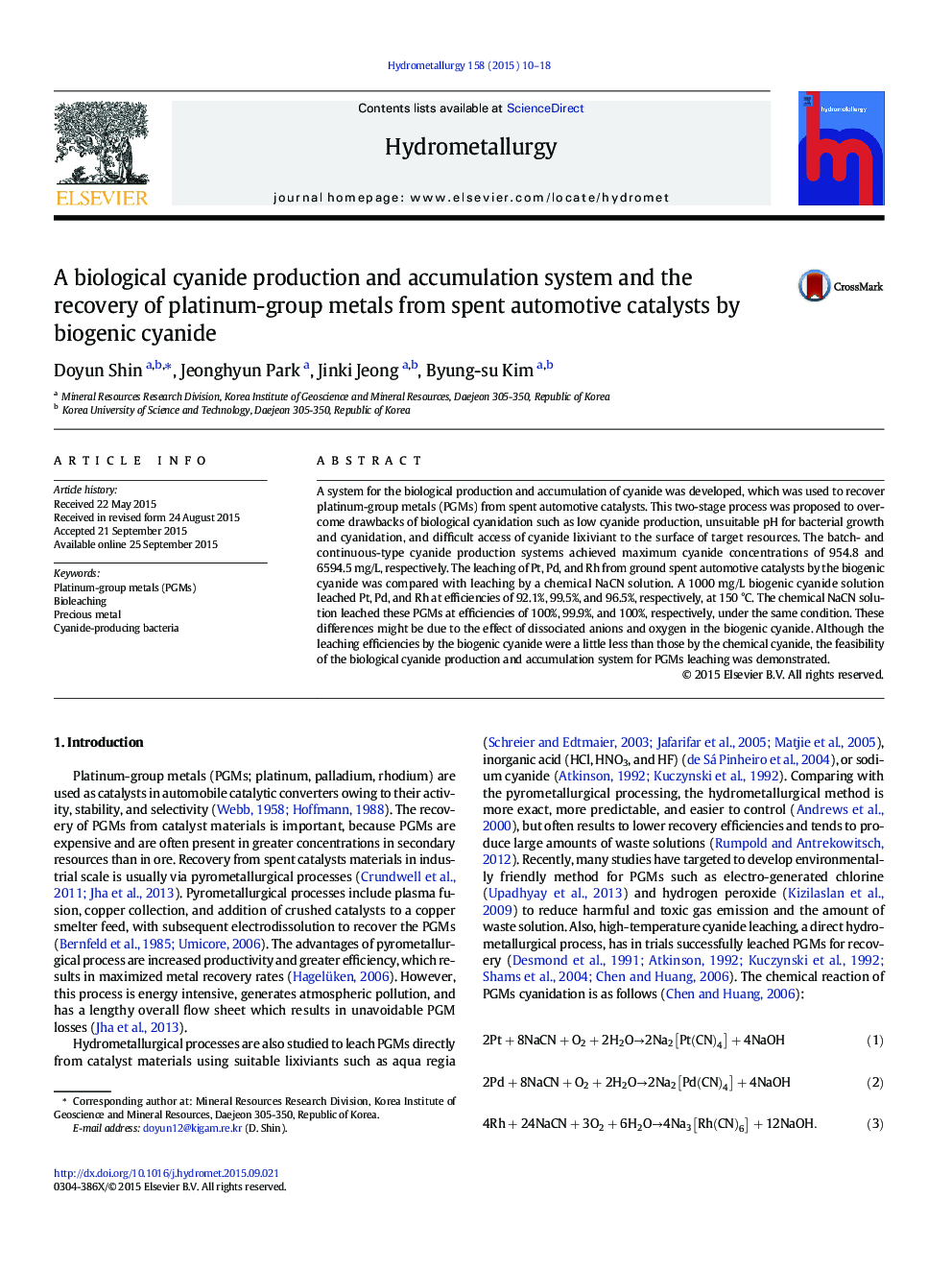| Article ID | Journal | Published Year | Pages | File Type |
|---|---|---|---|---|
| 211964 | Hydrometallurgy | 2015 | 9 Pages |
•A biological cyanide production and accumulation system was developed.•The concentration of the biogenic cyanide was sufficient for cyanidation.•A biogenic cyanide leached Pt, Pd, and Rh at efficiencies of 92, 99, and 96%.•The feasibility of the biogenic cyanide for PGM leaching was demonstrated.
A system for the biological production and accumulation of cyanide was developed, which was used to recover platinum-group metals (PGMs) from spent automotive catalysts. This two-stage process was proposed to overcome drawbacks of biological cyanidation such as low cyanide production, unsuitable pH for bacterial growth and cyanidation, and difficult access of cyanide lixiviant to the surface of target resources. The batch- and continuous-type cyanide production systems achieved maximum cyanide concentrations of 954.8 and 6594.5 mg/L, respectively. The leaching of Pt, Pd, and Rh from ground spent automotive catalysts by the biogenic cyanide was compared with leaching by a chemical NaCN solution. A 1000 mg/L biogenic cyanide solution leached Pt, Pd, and Rh at efficiencies of 92.1%, 99.5%, and 96.5%, respectively, at 150 °C. The chemical NaCN solution leached these PGMs at efficiencies of 100%, 99.9%, and 100%, respectively, under the same condition. These differences might be due to the effect of dissociated anions and oxygen in the biogenic cyanide. Although the leaching efficiencies by the biogenic cyanide were a little less than those by the chemical cyanide, the feasibility of the biological cyanide production and accumulation system for PGMs leaching was demonstrated.
